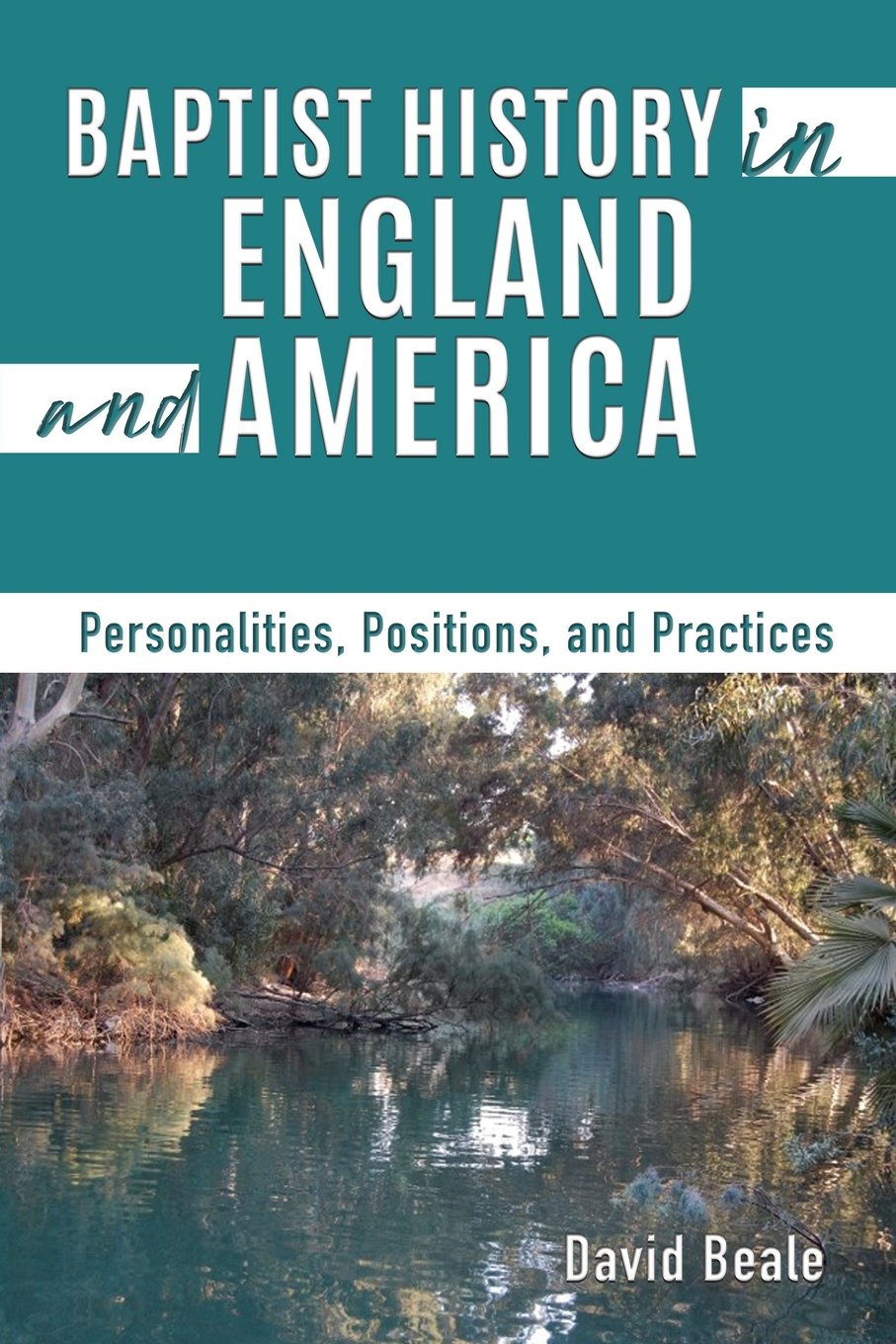An Author Interview from Books At a Glance
Books At a Glance:
Your book teaches the English Separatist Derivation view of Baptist beginnings, that is, the earliest Baptist churches derived from the English Separatist movement. What were the issues that had led Baptists to leave the Separatist congregations to establish their own?
David Beale:
Three things: The Separatists’ infant baptism, the practice of sprinkling and pouring, and, ironically, their insistence on governmental control over congregations.
Books At a Glance:
Were there any key areas of agreement between Baptists and Separatists?
David Beale:
Baptists wholeheartedly agreed with the Separatists’ departure from the Church of England. From their beginnings, Baptists preserved the English-Separatist commitment to be loyal citizens and to pay the penalties for obeying God rather than man. Baptists embraced and perpetuated the English-Separatists’ congregational governance, covenant commitment, and local-church discipline. Baptists loved the Separatist tradition of Scripture exposition. Baptists learned the beauty of holiness and the simplicity of worship among the Separatists. They cherished the Separatists’ singing the Psalms of the Old Testament. All these items would facilitate Baptist worship for many years.
Books At a Glance:
What were the initial differences between General Baptists and Particular Baptists and which group emerged first?
David Beale:
General Baptists taught that Christ died for everyone. The earliest General Baptist church organized during 1611–12. Particular Baptists taught that Christ died for only a particular, elect people. The earliest Particular Baptist church organized during 1633–38. Tracing the key individuals of each group is an amazing journey, constantly amassing a rich treasure of sermon illustrations.
Books At a Glance:
On what significant issues did Baptists and Anabaptists agree?
David Beale:
There were two major areas: (1) They agreed on baptizing believers only; and (2) they agreed on the separation of church and state.
Books At a Glance:
On what significant issues did they disagree?
David Beale:
There were at least seven major distinctions between Baptists and Anabaptists:
- Anabaptists were pacifists; Baptists were active in Oliver Cromwell’s Army.
- Anabaptists forbade their members from being civil servants; Baptists participated in government.
- Anabaptists forbade oath-taking; Baptists allowed it.
- Many Anabaptists were anarchists, such as those who revolted in Muenster, Germany in 1534–35; Baptist leaders insisted on restaint from all revolting against civil government.
- Many Anabaptists taught that Jesus’ flesh was non-human (heavenly) flesh. Baptists strongly rejected such teaching as heresy.
- Most Anabaptists baptized by pouring. All Baptists, by the early 1640s, were baptizing by immersion.
- Anabaptists taught the sinlessness and guiltlessness of the newborn. Particular Baptists rejected such teaching as Pelagian heresy and taught that sin and guilt are inherited from conception. General Baptists rejected Pelagianism but concluded that all guilt derives from voluntary, accountable sin. Most General Baptist groups degenerated into apostasy.
In the spirit of nineteenth-century ecumenism, Particular and General Baptists gradually merged. As early as 1832, English Particular Baptists modified the Constitution of their Baptist Union (est. 1813) to allow General Baptist churches into their membership. The Baptist Union steadily declined. During that time, Charles Spurgeon led his church to withdraw from the Union. He described this battle as the “Down Grade Controversy” (1887–92). In 1891, the New Connection of General Baptists officially merged with the Baptist Union. No doctrinal confession was required, and the labels Particular and General fell by the wayside. Nothing, however, could stop the growth of God-honoring Baptist churches around the globe.
Books At a Glance:
How did Baptists contribute to religious liberty in England and America?
David Beale:
While a list of illustrations would be far too numerous to begin here, a graphic theme that unfolds throughout most of this book is the persecution hurled against Baptists who, from gloomy prison cells, wrote precious books in defense of soul liberty and freedom of the conscience. Like the primitive churches of the first century, Baptists were tormented, incarcerated, and martyred for their faith. Their courageous testimony continues to stand as a beacon for perseverance in righteousness. From Baptists’ beginnings in the early 1600s to American’s Constitution and Bill of Rights in the late 1700s, their contribution is embedded in this story of men, women, and children who lived and died “for the faith … once delivered unto the saints” (Jude 3b).
Books At a Glance:
Would you give us an overview of your book?
David Beale:
The book divides into four segments. Part I is a series of introductory essays revealing the value of learning and understanding the immensity of our Baptist heritage (chapter 1). Part II is an overview of the General Baptists (chapters 2–4). Part III unfolds the story of the Particular Baptists—their politico-religious landscape; their earliest churches (chapter 5); key patriarchs—Hanserd Knollys, William Kiffin, and Benjamin Keach (chapters 6–7); John Gill and High-Calvinism (chapter 8); Andrew Fuller and Evangelical Calvinism (chapter 9); William Carey, the Father of Baptist Foreign Missions (chapter 10); and Charles Spurgeon’s life and ministry (chapter 11). Part IV focuses on American Baptists, including Roger Williams and John Clarke in Rhode Island, and Thomas Gould in Massachusetts. This section follows Baptist expansion, led by Elias Keach into the Middle Colonies and William Screven into the South (chapters 12–14). It narrates and interprets the Separate Baptist movement, including Shubal Stearns, Daniel Marshall, Lewis Craig, John Waller, Samuel Harris, James Ireland, and John Weatherford (chapter 15). In the lives and ministries of Isaac Backus and John Leland, the reader discovers the founding Fathers’ meaning of the Establishment Clause of the First Amendment to the American Constitution (chapter 16). This section traces the lives and work of pioneer missionaries, including Adoniram Judson, Luther Rice, and John Mason Peck (chapter 17); the emergence of theological liberalism (chapter 18); the rise of Baptist Fundamentalism (chapter 19); and the Southern Baptist Convention (chapter 20). Part V provides additional tools and resources (chapter 21). As a summary feature, the closing appendix provides a Travel Guide to Baptist sites in England, Wales, and America.
Books At a Glance:
What prompted you to write Baptist History in England and America and what contributions do you hope to make?
David Beale:
At the age of twenty, as a young Christian, I acquired a thirst for researching and writing Church History. Over the years, I have taught Baptist History some sixty times and used many textbooks. Seeking a balance between brief and exhaustive, I have aimed, in writing this book, to inspire and encourage, as well as to inform in a precise and reliable manner. Albeit, the more I learn, the more I realize that I know so little. Each of us is a speck on the windshield of eternity. My most profound hope, therefore, has been to glorify God, to inspire and encourage Baptists, in Christ alone, to stand with confidence in times like these, and to defend and perpetuate our biblical distinctives.

